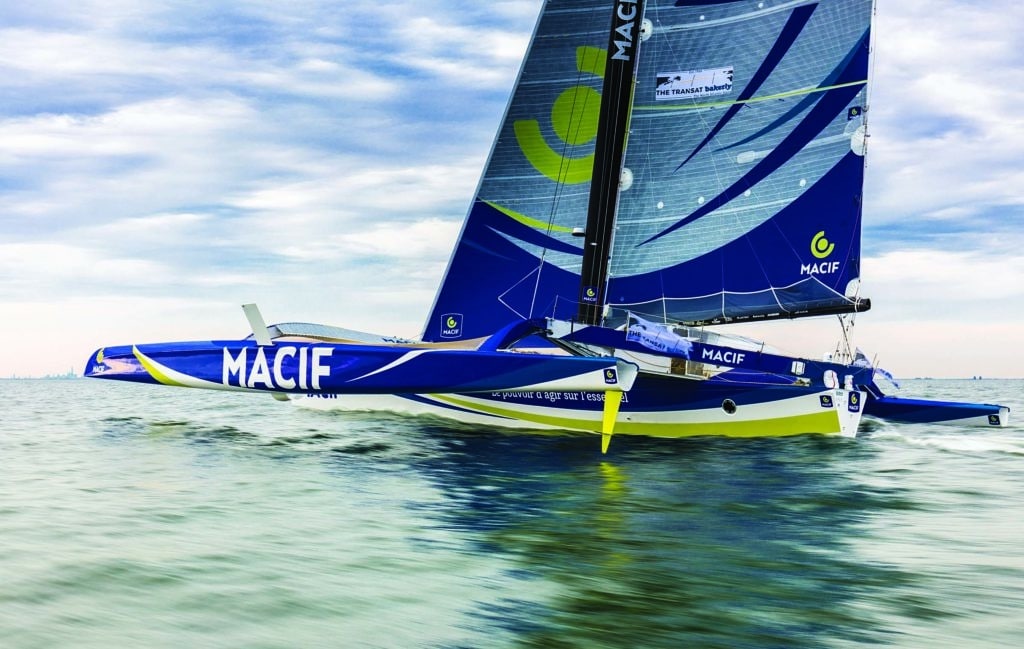
Since François Gabart won the Vendée Globe at age 29, he and his sponsor MACIF have graduated to the Ultime class, with a giant multihull launched last year purpose-built for singlehanded long-distance racing and record breaking. Gabart won last fall’s doublehanded Transat Jacques Vabre, and proved this was no fluke by winning the Transat bakerly singlehanded across the Atlantic, from England to New York, in May.
MACIF’s time was eight days, eight hours, 54 minutes and 39 seconds. This was roughly 25 minutes outside the race record set by Gabart’s mentor, two-time Vendée Globe winner Michel Desjoyeaux, in 2004 aboard his ORMA 60 trimaran, Géant, but Desjoyeaux’s win was on a shorter course, finishing in Boston.
As a demonstration of how technology has progressed over the last decade, note the difference in average speeds. Desjoyeaux made his shorter passage at an average of 16.41 knots; Gabart sailed 4,634 miles at an average of 23.11 knots.
What kind of waterborne weapon enables one human to sail over such distance at such a pace? The answer is the Ultime trimaran, designed by the French-based masters of the genre, VPLP. MACIF is 14.5 tons, 98 feet long and 69 feet wide. It draws 14.7 feet, and the rotating wing mast is 114.8 feet tall and can be canted to weather by hydraulics to prevent the leeward bow from burying. MACIF has America’s Cup-style foils in its floats and T-foil rudders, and can sail with all three hulls flying, although Gabart admits he is not overly comfortable sailing this way singlehanded.
Sailing singlehanded is never going to be as slick as it is with a full crew, so the technique is to maximize the solo sailor’s efficiency. Gabart, 33, helms, but more often the autopilot steers. He does navigate, but the Ultime class permits working with a shore-based router.
MACIF’s sail wardrobe consists of five sails: one main and four sails on furlers. Unlike on the IMOCA 60s, which keep their headsails furled, Gabart drops and hoists his. His most used headsail is the J2, which works from 10 to 22 knots upwind and a bit more reaching.
Gabart spends most of his time grinding. During training, over one 24-hour period, he spent 10 hours grinding during tacks, jibes and sail changes. “It’s really physical, but clearly, when you’re sailing offshore, you don’t change sails every two hours, so that is easier,” he says.
The boat also looks after the man. The entire cockpit is enclosed in a deck cabin. This is not because Gabart is a softie, but because he can operate more efficiently without being bombarded by green water or gale-force apparent wind. MACIF’s top speed is 43 knots in 30 knots of wind and big waves, but it is the average speeds that are more interesting on a long-legged beast like this. “If we can do an average speed for hours above 30 knots, in rough seas and difficult conditions, then I’ll be happy. We’re well on our way to this,” Gabart says. The solo 24-hour record stands at 682 miles, with an average of 28.45 knots.









